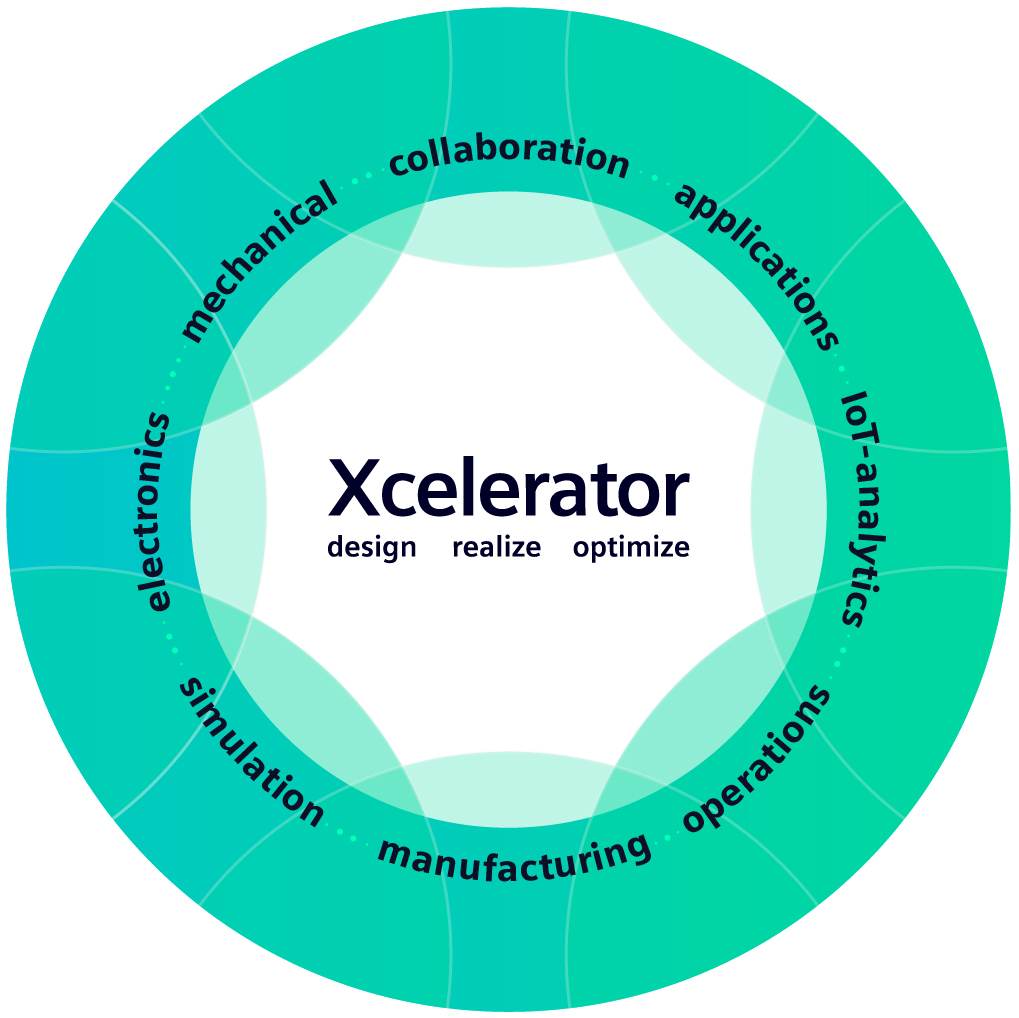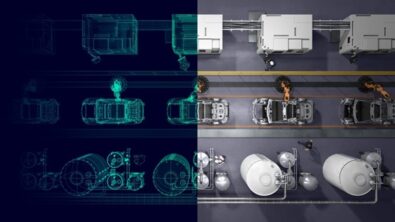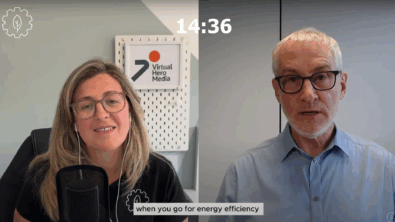Industrial digitalization during the pandemic and beyond

Like the rest of you, we at Siemens Digital Industries Software have spent much of 2020 learning new ways of working (from home), collaborating with colleagues and supporting customers. We’re a big part of the code-related story at Siemens, which unbeknownst to many is a global top 10 software company and No. 1 in the industrial software subcategory. Though maybe better known for trains, turbines, and CT scanners, Siemens has a growing software business generating annual revenues of nearly €5B and employing many tens of thousands of employees around the world. Our Xcelerator portfolio is central to that business and includes industrial software; a cloud-based, industrial IoT service offering; and a rapid application development platform.
We can vouch for the conventional wisdom that, for the software industry, the pandemic period has mostly accelerated many longstanding trends as far as how employees get their jobs done. This has not necessarily been the case for our customers, who are primarily in familiar industrial sectors like aerospace and defense, automotive and transportation, and electronics and semiconductors.
Some in Silicon Valley like to split the world into two halves – with bits and software on one side and atoms on the other. Most of our customers are in the latter camp, wrangling complexity in the physical world across raw material inputs, assembly lines and supply chains. And for them, 2020 has been a shock, particularly in the spring, when industrial output collapsed and the threat of the virus perhaps felt more imminent than it does now, particularly in the United States and Europe.
Let’s set aside the more recent rebound, which has been equally spectacular at least by certain measures (like the stock market), if wildly uneven (see unemployment). Rather, consider a few stories from our customers from earlier this year, and what these might suggest about digitalization moving forward.
VinFast
VinFast is an automotive startup in Vietnam, founded by Pham Nhat Vuong, with plans to sell a 300-mile electric SUV in the United States next year. Before the pandemic, our piece of the VinFast story was helping build a 335-hectare greenfield automotive factory in less than two years, using a digital enterprise portfolio. We described it here.
As coronavirus became a global pandemic, like so many companies with capacity, VinFast wanted to help. Vuong announced plans to build as many as 55,000 ventilators a month, aimed in part at the developing world. (Ventilators became something of a fraught topic in the United States, but as is the case with so much other healthcare technology, these devices are scarce in many countries.)
Here’s how Bloomberg described the ventilator project in an overview of Vuong, Vietnam’s richest man, and his Vingroup JSC, involved in everything from healthcare and education to real estate and smartphones:
The company configured its first ventilator assembly line in less than a month, customizing three rows of conveyor belts in its seven-month-old smartphone factory. Engineers from the company’s VinFast car unit worked on the design of the device, and representatives from Medtronic are advising workers who were making smartphones and TV panels a few weeks ago.
Not included in the Bloomberg story was how VinFast approached Siemens, essentially saying ‘We’ve got the design. How do we build it? How do we go fast?’ We worked with their engineers on a digital-twin approach to manufacturing, which led to ventilators rolling off those conveyor belts in just three weeks, starting from scratch. Their earlier creation of a digital enterprise was the only reason this was possible.
Spectrum Brands
Spectrum Brands is a Russell 1000 index global consumer products company, based in Middleton, Wisconsin. In the spring, when store shelves were empty of cleaning and disinfecting products, the company announced it was swapping over a production line at a Blacksburg, Virginia manufacturing plant from making Cutter Insect Repellent to hand sanitizer, in part to donate to communities where the company operates. Later the company announced it was expanding production of household surface cleaners and disinfectants.
We worked with SPB, helping reconfigure its manufacturing to adjust product lines, doubling up cleaning products while ramping down others. The changeover took a few short weeks, another example of the benefits of digitally enabled flexible manufacturing.
(As an aside, showing the highly distributed and unexpected way that work on a global crisis can unfold, mosquito repellent containing Citriodiol, an ingredient in some Cutter products too, appears to kill coronavirus on the skin, potentially providing another layer of protection, according to preliminary research by the U.K. Ministry of Defence.)
City of San Antonio
Government response to coronavirus has arguably emerged as a story nearly on par with the health effects of the virus itself. According to the United Nations, working hours for the world’s workforce dropped by 14% in the second quarter of 2020, the same as the loss of 400 million full-time jobs. In the United States, more than 13 million people are receiving jobless benefits, nearly eight times higher than at the same time a year ago.
In the spring, the City of San Antonio found itself inundated with housing financial assistance applications, which suddenly grew from an average of 60 per week to more than 2,000. The city, the nation’s seventh largest, used our Mendix low-code platform to build an app so that applications – for rental, mortgage, utility, and relocation assistance – could be done entirely online, which was difficult before due to requests for follow-up and supplementary information. The app included an opportunity to report and automatically flag for caseworkers domestic abuse, which has risen worldwide due to movement restrictions. The app was built and deployed in less than two weeks week by a two-person development team.
“For the City of San Antonio, low code is here to stay,” said Kevin Goodwin, the city’s CTO, in an interview with TechRepublic.
Housing Services Director Verónica Soto described the project this way to Bloomberg Cities:
Previously, applying for housing assistance was a paper-based process. Keeping it that way was impossible, both because of the incredible volume of applications and because social distancing made in-person interactions complicated. In two weeks, San Antonio did something that, in normal times, almost certainly would have taken months: Moved everything online. ‘That’s unheard of in government, to move that quickly,’ Soto said. ‘It isn’t a perfect system, but we had to move quickly because the need is so great.’ She knew that the digital divide would be a major problem in the move online. But that only fueled another innovation… To get the word out about the program and get residents enrolled, San Antonio partnered with a host of nonprofits and grassroots organizations, including some with deep connections to immigrant communities. These groups are running neighborhood intake centers where people who don’t have internet access or need help with the online form can go.
Read the whole thing, which talks about how technology can be used in concert with other public-private initiatives to address a community problem here.
Three trends
These examples, while only anecdotes, help illustrate three broader trends as the world, and particularly the industrial economy, begins to look beyond the pandemic: adopt a digital-first mindset, embrace a human-centered approach to innovation and demand access to open ecosystems where the hallmark is an architecture of federated data.
Of course, even companies that are only peripherally related to technology sing the praises of digitalization, among the most overused terms in all of the tech and business media. The word itself poses more questions than it answers, including who you’re talking to and what exactly you mean.
We’re speaking mostly to the industrial sector, which, for all the outsized attention that tech, finance and media/entertainment receive, continues to punch above its weight in the world economy. The broad ‘industry’ category accounts for roughly a third of the global economy and nearly always for a disproportionate per capita share of GDP. In the United States, for example, the industrial sector accounts for just 13% of employment, yet almost 20% of GDP. The services sector, by contrast, accounts for 84% of jobs and 80% of GDP.
Digitalization at Siemens
Siemens itself remains an industrial stalwart and for us, the initiative starts at home. The company is in the midst of a much described multiyear transformation, hinging on digitalization. See, for example, this Harvard Business School case study, revised in 2018, “Digitalization at Siemens,” which begins in what almost counts as dramatic fashion, at least for academic writing:
On a rainy December afternoon in 2015, Joe Kaeser, CEO of Siemens, came out of a meeting with his business heads after a spirited discussion about the future of Siemens’ Digitalization Initiative.
The key point comes later:
[T]he Siemens managing board had created the Siemens Digitalization Program to make Siemens a leader in the paradigm shifts that resulted from combining the physical and virtual worlds.
Years later, this remains an overarching objective and a reasonable description of what we mean by digitalization when we in Siemens Digital Industry Software use the term. Digitalization includes the use of an ever more comprehensive digital twin that integrates the virtual and physical worlds; personal and adaptable applications for new ways and working; and access to open, modern ecosystems. (Our Xcelerator strategy is built around and embodies this definition.)
Open platforms
We believe the best digitalization stories in the years ahead will be those that embody all three of these elements. Indeed this characterization takes direct aim at the digitalization paradox, where investments in technology fail to yield expected revenue enhancement, a topic of academic research (and CIO consternation).
See, for example, this 2020 article by Heiko Gebauer and colleagues, which provides an overview of the subject and focuses on industrial companies in a business-to-business context. The authors note how companies can fall into expected traps like thinking about technical possibilities rather than customer needs, preventing data-sharing with key component suppliers and failing to build trust among ecosystem partners. We’d respond that embracing a holistic, tripartite approach to digitalization (digital twin, personalized apps, open ecosystems) is perhaps one way to avoid such traps.
The authors call out our MindSphere IoT as a service offering to make a point about open platforms and trust, our emphasis added:
Companies may recognize the need to collaborate with partners to build digital ecosystems, but they sometimes lack the necessary trust to succeed through such collaborations. Some firms are afraid that many companies will contribute to platform models but that only a few companies will dominate the ecosystem, thereby capturing a disproportionate share of the economic value. As many examples suggest (e.g., search engines, online marketplaces, maps, music services), winner-takes-all and quasimonopolistic platforms are not uncommon (Parker & van Alstyne, 2014). Thus, a collaborative growth path can only unfold if there is sufficient trust among partners and so long as each partner understands its specific role.
Siemens’ development of its MindSphere platform illustrates this sort of collaborative growth. Its partners specialize in certain roles, such as consulting, application, systems integration, technology and connectivity. Over time, Siemens and its partners have worked to clarify their roles, like technology partners being responsible for enhancing the capabilities and ensuring the adoption of the MindSphere platform, which involves analytics, artificial intelligence, and big data. Siemens developed a partner program for providing a comprehensive set of benefits (e.g., sales and technical training, application-development tools, technical support, marketing resources, legal support and business development funds) to help its partners accelerate their applications and services on the MindSphere platform.
San Antonio and its use of Mendix is another example of the power of openness and flexible app development – and not incidentally of the fact that the salutary effects digitalization can be felt far beyond industry. The city’s ability to respond quickly depended on work that predated the pandemic, including incorporating GIS-enabled services, responsive web-facilitated interactions with its residents, and low-code app development. (Cloud-based Mendix is increasingly central to our Xcelerator strategy, a point accurately noted by the analysts that cover Siemens Digital Industry Software, like ARC Advisory Group’s Dick Slansky, who blogged one of our virtual summer 2020 events.)
On being an intentional organization
Crises routinely spur not only innovation but also a general setting aside of differences in favor of more cooperation among individuals, firms and countries, a point made everywhere, including HBR. “The bottom line: Practical, useful acts of kindness are good for humanity, and good for business,” wrote Fast Company co-founder Bill Taylor in a March 20 post.
That such a spirit has waned or evaporated now is not the less poignant for being expected. Also expected is that other crises loom, which will require widespread, collective response – albeit one that allows individual initiative and risk-taking to flourish. Beyond the customer anecdotes above, Siemens Digital Industries Software president and CEO Tony Hemmelgarn recently outlined several stories of our customers working to address to reduce emissions, with examples ranging from electric aircraft and school buses to more fuel-efficient cargo ships, an industry which carries 90% of global trade and generates roughly a billion tons of CO2 and greenhouse gases annually. (You can view Mr. Hemmelgarn’s remarks from our 2020 media and analyst event, held virtually in June, here.)
Whether the challenge is public health or climate or something else, one conclusion from 2020 is all the upside to digitalization, applied in commonsense fashion and in a human-centered way that aims at more than just maximizing returns on investment for tech vendors. Indeed there’s an important second pillar to the digital transformation story at Siemens, relevant across technology domains, including AI, which many say will define the coming era. Nada R. Sanders and John D. Wood accurately describe this in their August 24 HBR post, “The Secret to AI Is People.” They write:
An intentional organization knows why it matters to the world, not just its shareholders. A good example of intentionality in the use of AI comes from Siemens, which evolved from a shareholder-profit-maximizing power generation and transmission company into a leading provider of electrification, automation, and digitalization solutions with energy-efficient, resource-saving technologies driven by AI and the Internet of Things (IoT) in service to society. This cultural shift toward a higher human-centric purpose impacted not just marketing and product design but also the strategic decision to, as Scott D. Anthony, Alasdair Trotter, and Evan I. Schwartz wrote for HBR, ‘divest its core oil and gas business and redeploy the capital to its Digital Industries unit and Smart Infrastructure business focused on energy efficiency, renewable power storage, distributed power, and electric vehicle mobility.’ While financial performance and shareholder value will always be important, creating human-centered, technology-powered organizations will actually drive financial performance in the age of AI.
Read the whole thing here, also the HBR article cited by Mr. Anthony and colleagues, which lists Siemens at one of the top 20 business transformations of the last decade.
Taking the long view
The relentlessness of the tech news and social media cycles aside, the world is decades or more into the rise of digitalization. Our executives often take the long view in their public statements, expected in a company founded in 1847, almost 100 years exactly before software, as it’s now understood, existed. Perhaps in the future, 2020 will be seen as the maturing climax of the era of big, mostly business-to-consumer platform companies. The list of the world’s ten most valuable companies is dominated by such B-to-C platform companies, most in the United States and some in China (and none in Europe). These companies generate massive revenues though over a smaller base of employees than is true in other industries, past or present. Compare the revenue per employee at Google (well above $1M) with that of Siemens (less than $300K); then compare headcount – Siemens employs three times as many people.
The digital transformation of industry, surely the next tech wave, and one only accelerated by the coronavirus crisis, is perhaps the world’s best chance to bring expanded economic benefits to a larger segment of the world’s population. (That it can be done in a way that puts people first is an obvious lesson from our customer stories this year and the pandemic generally.)
Siemens incoming CEO, Roland Busch, often speaks in such terms. Here’s Dr. Busch in conversation with Christiane Ribeiro in an internal Siemens podcast for our hundreds of thousands employees worldwide, published earlier this year, an appropriate last word here, again with our emphasis added:
Chris: So, do you believe that IoT will be the next growth engine of society?
Roland: It’s about growth. That’s one element. But what are the challenges we’re looking to solve where IoT might help? So, number one is growth, and have in mind that the growth over the last years enabled us, as a society, to bring hundreds of millions of people out of poverty. We have an aging society, which is another problem because the cost for our healthcare systems will increase. Aging society means also that we have less people in the labor market, and we have to feed close to 8 billion – soon, 2035 maybe, 9 billion people. And here comes another challenge – all that has to be done and using less resources. So these are the challenges. How can we maintain our economic growth while consuming less resources?
Chris: Do you really think that IoT can help to solve these challenges?
Roland: I do believe that IoT can make its contribution like technologies did in the past… [W]e need a substantial new way of deploying technology, and I do believe that IoT, or in other words, the connection of the real and the digital world, can do a lot in order to contribute to solving these challenges.
For more, visit Xcelerator

